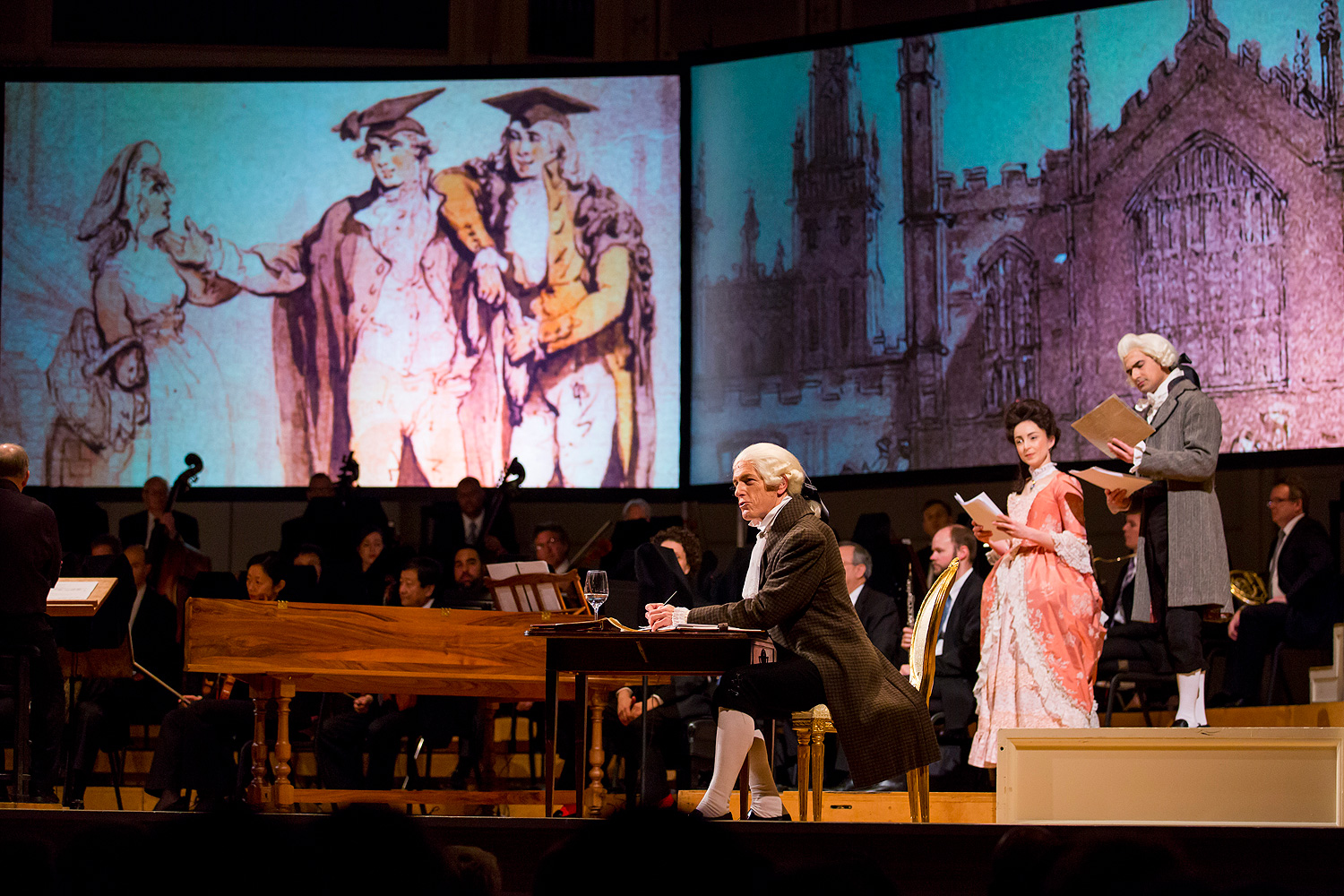The American composer Charles Ives, an insurance man by day for most of his compositional career, worked to craft a music that reflected the American landscape. “He saw the landscape as a kind of palimpsest,” says Gerard McBurney, the impresario of the Chicago Symphony Orchestra’s series Beyond the Score, a sort of theatrical program-note-cum-concert. “Its history was written and rewritten—the history of the people he belonged to. He wanted his music to be like that landscape.”
Ives’s Symphony No. 2, the focus of Beyond the Score this Friday and Sunday and the capstone of the CSO subscription concerts on Thursday and Saturday, is encyclopedic with references to the hymns, fiddle tunes, patriotic songs, vernacular music, and European tradition Ives saw threading through the patchwork history of America. With great debt to McBurney, here are a few things to listen for in Ives’s Second:
- The patriotic song “Columbia, the Gem of the Ocean,” a competitor for the U.S. national anthem before “The Star-Spangled Banner” was chosen, pervades the symphony, first appearing at about 3:05 in the YouTube video. McBurney says Ives played tunes like “Columbia” in his father’s cornet band beginning at the age of 8. Ives once said, “In thinking up music, I usually have some kind of a brass band with wings on it in back of my mind.”
- With its distinctive chromatic-neighbor figure in the chorus, the hymn “Beulah Land” appears in the slow second movement. “[Ives] lets it drift in and out,” McBurney says. “You never quite hear it, but your memory is nudged.” The hymn refers to a place from which you could see heaven, called Beulah from a passage in Isaiah. Starting at around 16:10 and continuing for about 40 seconds, you can hear Ives transform “Beulah Land” into “America the Beautiful.”
- Another touchstone for Ives, the songs of Stephen Foster surface often, most prominently “Massa’s in the Cold Ground.” Easier to tag than “Massa” is the “oh the doo-dah day” bit from “Camptown Races,” which jumps out in the horns at 26:15 and 26:48. Another vernacular tune, “Turkey in the Straw,” makes a cameo at 26:57.
- Sentimental English songs, in an age before recording, traveled through American culture. “They were just pious parlor songs,” McBurney says, “that spread around the Anglophone world.” Out of a slow, dreamy texture, the flute plays “Long, Long Ago,” a tune McBurney notes probably rings a bell for Suzuki students.
- At the very end of the piece, starting at about 34:00, the texture becomes more frantic, and “Columbia, the Gem of the Ocean” layers with the bugle call Reveille as the music picks up steam and the flutes start going crazy. On the final chord, Ives calls for a splatty dissonance instead of a clean tonic triad, like you might hear from an amateur community band. At the end of a less venturesome work than most of Ives’s oeuvre, it points toward his future musical experiments.
Beyond the Score and the Chicago Symphony Orchestra present Ives’s Second Symphony Apr. 25 at 7:30 and Apr. 27 at 3:00. The CSO plays it in a program with Mozart and Richard Strauss works Apr. 24 and 26 at 8:00. For details, visit cso.org.



